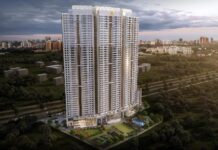New Delhi, February 11, 2018: Rationalising postage responsibility, creating integrated satellite townships and developing a dedicated area for non-resident Kannadigas are a number of the proposals provided to the State authorities before the State Budget. A look by business specialist R.P. Deshpande
Before this State budget scheduled to be presented by Chief Minister Siddaramaiah shortly, here’s a wish list in the kind of tips related to Bengaluru property and mortgage banking.
Rationalising stamp duty
Currently there’s a uniform stamp duty of 5 percent on property transactions. In Bengaluru town (main regions), average ticket size of land is anticipated to be Rs. 50 lakh and state to get 100 possessions, the revenue collection from stamp duty could be $ 5 percent of 50,00,000 X 100 = $250 lakh.
It’s advised to rationalise the stamp duty on the expense of property as follows, with a view to boost the revenue from stamp duty and supply substantial aid to EWS, LIG and lower strata of MIG of individuals, that are desirous of purchasing land costing less than $ 50 lakh.
A) Properties around Rs. 50 lakh
(Only residential properties to promote affordable home) : 4 percent
C) Properties of market worth over $ 100 lakh : 6 percent
(About 5 properties of state 150 lakh, stamp duty set) : $ 45 lakh
Complete stamp duty collection over 100 possessions may be 248.25 lakh, very similar to stamp duty set according to existing system.
Growing stamp duty on all industrial properties to 6 percent will definitely boost the revenue collection.
Once stamp duty is decreased as indicated, it is probably that the amount of registrations increases for greater sales collections, a step needed to fulfil the aim of ‘Home for all by 2022’ and promote ‘Affordable Housing’ business.
All banks, Home Finance Companies (HFCs) and other creditors while progressing home loan or loans against possessions, acquire prime safety in the kind of ‘Deposit of Title Deeds (DTD)’ of their property to be financed.
Big majority of banks/HFCs make DTD, but don’t enroll the mortgage, so the mortgage is understood to just borrower and lender. Hence mortgage entrance won’t be looking from the Encumbrance Certificate issued from the office of Sub-Registrar or won’t look in almost any domain.
The facility given by the authorities of not minding for registration of the mortgage can be misused both by borrowers and lenders, resulting in huge revenue loss to the government exchequer. When many lenders avoid stamp duty payment, a couple of criminal enthusiastic borrowers, without revealing the mortgage made in favor of their bank/HFC, either market their home to gullible buyers or possess multiple financing on a single property. Hence non-registration of DTD has result in acute hardships to gullible purchasers of encumbered possessions, has improved Non-Performing Assets (NPAs) to get banks/HFCs and has forced the authorities to lose huge earnings.
Thus it’s advised to make enrollment of DTD required by charging minimal registration fee. Currently postage duty for DTD is mended as 0.1 percent of loan amount for loans up to $ 10 lakh; 0.2 percent for loans over $ 10 lakh.
If registration of this MODTD is made compulsory, first, it is going to help buyers avoid encumbered home, since the mortgage entrance will be exhibited from the EC (Encumbrance Certification). Second banks/HFCs will boost their NPAs and it’ll surely boost the essential revenue set for the State Government.
Developing integrated townships
For the evolution of designs for allotting to the general public, the flagship action of BDA from the previous four years has been a entire collapse where incorrect affidavits are supplied to a couple corrupt government for accessing websites allocated along with the website used as insecure investment means. Largely the BDA designs are under-developed, they’re without basic amenities such as roads, power, water and sewer connections for decades, and so homes haven’t come up in these large layouts.
Thus it’s advised to prevent design formations by BDA/BMRDA or these governments and commence developing Integrated Satellite Townships beneath PPP (Public-Private Partnership) model, on the traces of Bidadi Township declared in 2006, that had been shelved after.
The significant reason behind toddlers the Bidadi Township is thought to be immunity from property owners because of displacement of families that were settled, losing income from farming lands and lower costs provided. Together with the powerful model of land surveying in neighbouring Andhra Pradesh or the version embraced in Gujarat, it’s strongly suggested to rekindle Integrated Satellite Township jobs.
Countless Kannadigas are living abroad on employment and company. With lots of dreaming to come back to the State, their interest in buying properties mostly in Bengaluru cannot be ruled out. It’s projected that over 20,000 NRKs have bought properties as investment. Many have experienced their property dealings resulting in litigations, and dropped funds with operators that are nimble.
It’s for the sake of millions of NRKs it’s advised to create an ‘NRK City’ inside a radius of 10 kilometers from Kempegowda International Airport, on the traces of Integrated Satellite Township of approximately 10,000 acres with great infrastructure.
With the support of several powerful NRIs, it might be simple to find the mandatory FDI from developed countries in creating the ‘NRK City’.As property is your ‘growth engine’ of the market, rationalising stamp duty, making enrolling the DTD compulsory, and growing Integrated Satellite Townships and ‘NRK City’ will surely propel the expansion by catalysing core industries such as cement, steel, electricity and transportation and generate millions of jobs.




















